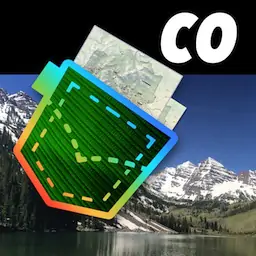"Twisted Rock under a summer sky." by NPS/Michael Thomas , public domain
Josie Bassett MorrisDinosaur |
Dinosaur
National Park Service
U.S. Department of the Interior
Dinosaur National Monument
Josie Bassett Morris
Wild and dangerous, romantic and adventurous, the American West is for most
people today an almost mythological world, one separated from ours by time,
technology, and civilization. Yet, for Josie Bassett Morris, the Wild West was a
stark reality. Josie lived most of her 90 years of life in this austere, yet beautiful,
landscape in a time simpler than today, when people depended directly on the
bounty of the land for survival and “neighbors” for companionship.
Embracing the Freedom
of the Frontier
In 1862, the United States Congress passed the
Homestead Act in an effort to move people
into their newly acquired territory of the
American West. Born in Arkansas around
1874 to educated and wealthy parents, Josie
was only three years old when she and her
mother–ambitious, independent, strong-willed
Elizabeth–and her mild-mannered father,
Herb, packed their belongings and made the
journey west by wagon. They homesteaded
in an area called Brown’s Park, only 40 miles
from the Cub Creek site that Josie homesteaded
independently later in life.
A Progressive Style of
Womanhood
The women of Josie’s family were not only
pioneers of the west, but also represented a
progressive style of womanhood. Josie married
five times and she divorced four husbands,
in a time when divorce was almost unheard
of. For this, Josie, with her strong will, charm,
and independence, garnered rumors about
her throughout most of her life. Josie was
universally admired, however. Living such
a remote and rugged lifestyle, women were
respected if they could work alongside the
cowhands and run an efficient ranch, in
addition to being feminine.
With no money to buy property, Josie decided
in 1913 to homestead again – this time in Cub
Creek. Here she built her own cabin and
lived for over 50 years. She shared her home
with her son Crawford and his wife for a time;
grandchildren spent summers working and
playing alongside Josie.
Written by Alida Bus, 2007
As a child in Brown’s Park, Josie contributed
her part of the household and ranch chores.
Once these duties were complete, young Josie
was free to play in the surrounding wilderness
with her four siblings. The children grew up
having an intimacy with and dependence on
the natural environment, forming values based
on hard work and resourcefulness. Josie’s
family hosted many guests in their home,
including some outlaws like Butch Cassidy,
which fostered in Josie a strong sense of
hospitality, generosity and community.
The Pioneer West in the
Modern Age
Raised on the frontier, Josie lived into the
modern era of electronics. For friends and
acquaintances in the 1950s, Josie was a link to
a world past. During Prohibition in the 1920s
and into the 1930s, Josie brewed apricot brandy
and chokecherry wine. After a lifetime of
dressing in skirts, she switched to wearing pants
in her later years. She was tried and acquitted
twice for cattle rustling when she was in her
60s. At the age of 71, in an ambitious move to
revive a profitable cattle business, she deeded
her land away and lost all but the five acres
where her cabin still stands. In December of
1963 the legendary Josie suffered a broken hip
while in her cabin; she died of complications in
May of 1964.
Josie’s Homesite Today
Today Josie’s cabin would be considered a
modest structure. It is hard to imagine this
place as a hub of activity, a site where one
individual poured heart and soul into endless
hours of chopping wood, cooking meals,
milking cows, entertaining guests, and tending
the chicken coop and vegetable garden. Look
closer at the walls and envision a bed where
Josie slept through bitter cold nights. Breathe
in and imagine the rich aroma of Josie’s
homebrewed coffee and homemade biscuits.
Envision how it would have been to be a guest
at the generous hostess’ table. Take a moment
to sit in the shade of the trees surrounding
Josie’s cabin – trees she carefully planted to
provide the shade and fruit necessary for
survival in a harsh environment. Walk the
short trail to the box canyon where Josie
penned her livestock; the wooden fence still
stands. Imagine living in this place without
plumbing, electricity, or neighbors for over fifty
years. Relax and let the stillness enchant you;
it is this same peacefulness that Josie may also
have felt here.
Trail to Box Canyon
n
ai
it
pl
t
un
o
M
S
Sp
Root Cellar
lit
M
ou
nt
X
X X
X X
X
X X
X X
X
irrigation
X
Chicken Coop
X
X
X
X
n
X
X
X
X
X
ai
X X
Outhouse
X
Vegetable
Garden Site
X X
Cabin
Animal Shed
X
X X X
X X X X X
X X X
X
X
X X
X
X X
X X X
X
X X
X X X X
X
X
X X
X X
Fruit Orchard
X
Tack Shed
X
X X
X X
Key:
incline
foot path
existing structure
road
stream
site of former structure
pond
fence
tree / shrub
X
X X
spring
EXPERIENCE YOUR AMERICA
Trail to Hog
Canyon




